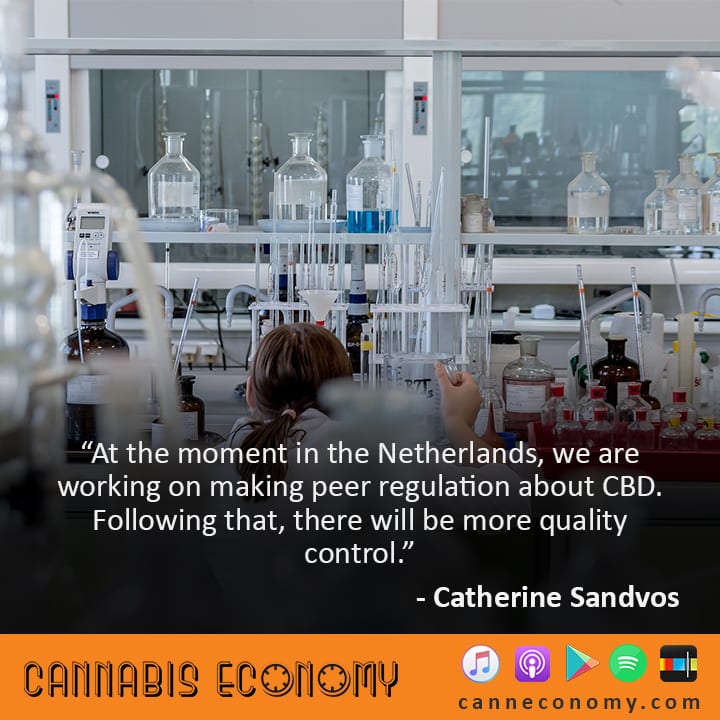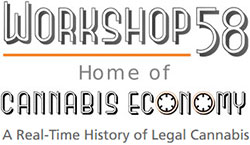
Ep. 454: Catherine Sandvos, The Netherlands
August 1, 2019Catherine Sandvos, of the Office of Medicinal Cannabis in the Netherlands, joins us to discuss the history and current state of Dutch cannabis regulations. Sandvos is pleased that other countries seem to be setting up their own regulations and production processes, as it relieves the Netherlands of the responsibility to provide for all of Europe. As well, Sandvos notes that the international cannabis landscape used to be very separated by country, but that, now, countries are coming together to help one another and exchange information. With more and more countries contributing and taking the lead, the European regulatory landscape will only continue to exponentially mature and improve.
Transcript:
Seth Adler: Catherine Sandvos joins us from the Netherlands. Welcome to Cannabis Economy. I'm your host Seth Adler. Download episodes on CannEconomy.com. That's two N's and the word economy. This is one of the sessions from our digital workshop that just occurred. So you can hear it here, you can see it there on CannEconomy.com along with each of the sessions. First a word from Wana Brands, and then Catherine Sandvos.
Seth Adler: Want to know with Wana Brands. Nancy, retell our education.
Nancy: Virtually everybody who goes into a dispensary is going to have contact with a bud tender. So it's absolutely critical that they be part of the process of helping people make good choices and helping people understand how to use the products. So we are really passionate about this. We have a full time training resource so that we can really be a part of the solution for getting bud tenders to the knowledge level that they should be at.
Seth Adler: Okay. We've got Catherine Sandvos right there in the Netherlands. Catherine, thank you so much for doing this. Really appreciate it.
Catherine S: Hi, Seth. Yeah, you're welcome. Nice to see you again, to be here again.
Seth Adler: So you somehow are outside of a barn but inside of a comfortable environment.
Catherine S: Yeah.
Seth Adler: So international regulation, we've been speaking about this on and off over the past few years. But it was quite some time ago that we had our first conversation where you were on the same panel. And so just if you would, give us a little bit of background about you and your position so that we understand the rest of the session.
Catherine S: Well, if you look at the regulation in the Netherlands, the Office of Medicinal Cannabis already has been installed since 2003. So back in 2015 we didn't have much issues on the regulation anymore. Our issues were mainly the lack of clinical studies on the therapeutical value of medicinal cannabis and the prescribing behavior of doctors.
Seth Adler: So those were the most pressing issues of 2015.
Catherine S: Yes.
Seth Adler: Those globally are still the most pressing issues. So I wonder maybe one step further of just giving us a sense of how it was working in 2015 if you can kind of think back to that time. What was the infrastructure like, and what was the size of team versus the size of your team today, for instance, and all of that?
Catherine S: We were working with four people at the Office of Medicinal Cannabis. At the moment, we expanded to eight people. So yeah, we doubled. But there are not many changes in our process or how our... Our process is still the same. We contracted as Dutch governments, Dutch agency grower. We collect the harvest there. We let it package or we get it packaged in five gram containers, and then we take care of the distribution to pharmacies for patients. So the process is still the same.
Seth Adler: Same thing day in, day out.
Catherine S: Yes.
Seth Adler: As far as going from four to eight, just take us through, unpack. I would imagine there's just more work to do, yes?
Catherine S: Sorry. What do you mean?
Seth Adler: Going from a team of four to a team of eight, you've doubled in size. So comparing from 2015 to 2020, what are some of the key changes, if not the process itself?
Catherine S: Yeah, the main changes are that our production went way up, and we are producing a lot for other European countries. We export to Germany, and Germany, they established an Office of Medicinal Cannabis themselves now. And they put out a tender, and they contracting a couple of rows. But they only will be able to deliver their own markets in 2021, 2022. So we also take care of the German markets. We also export to different countries, to Denmark, Finland, Italy, Poland, Malta, Cyprus, yeah. Many more countries. But also in small portions. I think the biggest countries are Germany and Italy. And because the production went up, we also every harvest we take in we collect data, it goes to laboratory. So it means a lot of more work. The more harvest we have, the more work we have, and the export process is also pretty time staking process because yeah, we have to export if I had a UN regulation.
Seth Adler: And we'll dive in further in export and production. I understand though that the most pressing issues for you moving into 2020 are export and production. Unpack if you would why it is those issues? In other words, what do we have to do with UN to make sure we're following what we need to follow?
Catherine S: For exports, you mean?
Seth Adler: Yes.
Catherine S: Well, the importing country has to provide an import authorization, and yeah, that's the same important authorization as you need for other opioids. So it's exactly the same for each procedure. When we receive that, we can apply for an export authorization different part of our authorities. And then we can export. So it sounds pretty easy, but it's a lot of paperwork. Yeah. A lot of planning.
Read the full transcript:
Become a member to access to webinars, quarterly reports, contributor columns, shows, excerpts, and complete podcast transcripts
